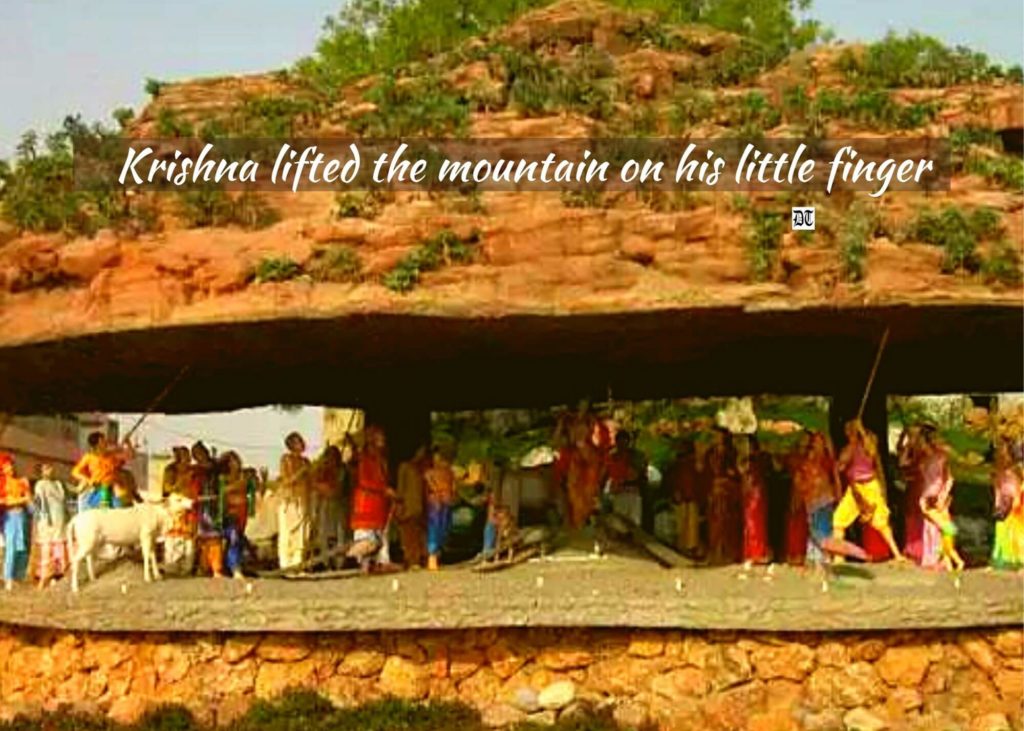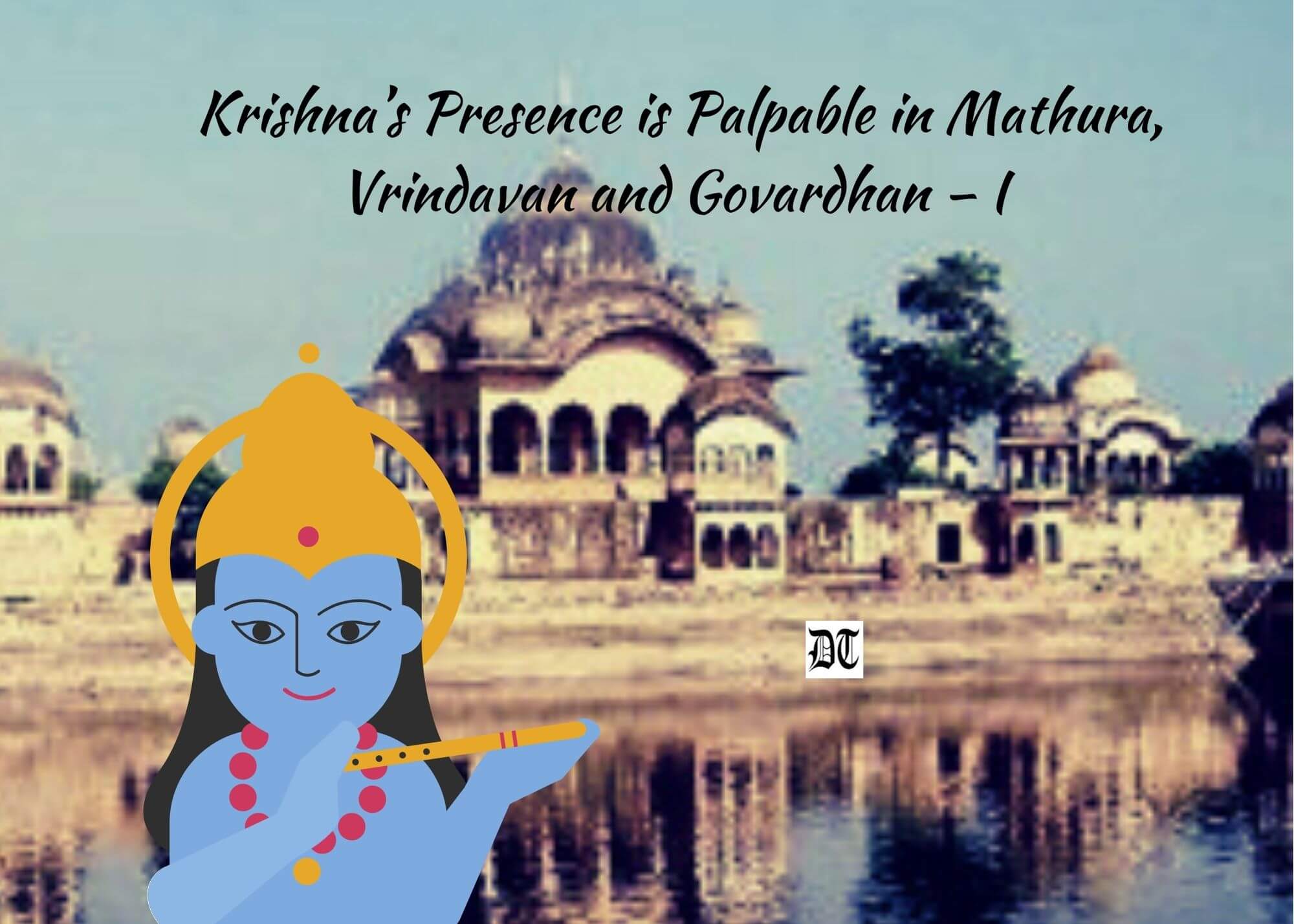Reading Time: 4 minutes
Dr Roopali takes us through the blessed Braj Bhoomi. The legends of Lord Krishna live here. His birth, frolicking, Leelas and vanquishing evil. An exclusive for Different Truths.

In Mathura and Vrindavan in India’s Uttar Pradesh, there’s a spiritual connection with Lord Krishna. It is an integral part of the indelible collective consciousness of Indians. Located some 160 kilometres from Delhi, and accessible by road, these are important cities of Hindu pilgrimage.
The ancient city of Mathura is also known as Braj Bhoomi. It is the renowned birthplace of Lord Krishna. He is the most worshipped among the Hindu pantheon of gods. It is here that King Kansa imprisoned his sister Devaki in a dungeon. And it was there she gave birth to Krishna on a stormy monsoon new-moon night.
Like Herod from the Old Testament, Kansa too had to kill all first-born male children.
Like Herod from the Old Testament, Kansa too had to kill all first-born male children. An oracular voice had warned of his nemesis in the form of a male child.
Krishna and Vrindavan
Some five thousand years ago, Krishna, an incarnation of the Supreme Lord Vishnu, lived in Vrindavan. He took birth to rid the world of sinners and sins. Stories of Krishna as a child are woven into India’s dances, songs, paintings, sculptures and textiles. His childhood tales are full of beauty and charm. They inspire both children and adults to courageously take the path of justice
Vrindavan is only 14 kilometres from Mathura. This is the land where Krishna frolicked.
Vrindavan is only 14 kilometres from Mathura. This is the land where Krishna frolicked. Every year, approximately three million people visit to pray in its many temples. And to bathe in the river Yamuna. Yamuna is intrinsically a part of innumerable Krishna narratives.
River Yamuna is also the backdrop for the 12th century poet Jaideva’s epic poem, Geet Govinda. It celebrates the love between the young Krishna and Radha. It symbolises the immortal bond between the Atman (soul) and the Paramatma (Oversoul).
Five thousand temples dot the landscape. Most temples came up, during the reign of the Mughal King Akbar. His Deen-e-Illahi became one of the secular agencies operating during the period. Later, during Aurangzeb’s rule, destruction of the main temple in Mathura happened.
Krishna’s Birthplace
Many myths and local stories weave themselves together intricately over centuries, offering a unique ambiance to the bustling city that is now Mathura. In Mathura you can’t help but feel a palpitating presence of Baby Krishna. It’s known as Krishna’s Janmabhoomi (birthplace).
The prankster Krishna and his beloved playmate Radha’s legend lives in Vrindavan.
The prankster Krishna and his beloved playmate Radha’s legend lives in Vrindavan. Some temples in Vrindavan are more popular than others. Most visited are the Banke Bihari, Shri Radha Bhalabh and the ISKCON temples.
Radha-Krishna artefacts are everywhere as you meander through the lanes and by-lanes. Banke Bihari is the most popular of the Krishna themes! You can purchase colourful regalia to dress as Radha. Mostly, it is the ISKCON Hare Rama Hare Krishna group that buys these.
Young Krishna loved kheer, pedha, and other milk products.
Young Krishna loved kheer, pedha, and other milk products. Resplendent sweetshops stacked with Krishna’s favourites adorn the lanes, by-lanes, and main thoroughfares. And monkeys run around, playing trick-or-treat with visitors. Something in this ancient ground draws us into its heart.
Krishna Destroyed the Evil
Legend has it that during his lifetime, Krishna encountered many evil forces like Kansa, his uncle, Pootna, the demon woman, and Kaalia, the many-headed serpent. These and other episodes image him as the vanquisher of evil. And thus establish his divinity.
In Hindu mythology, Indra, the King of all Gods often used his power to terrorise the less powerful.
In Hindu mythology, Indra, the King of all Gods often used his power to terrorise the less powerful. These included other Gods, mortals, and demons. His weapons, comprising thunder, lightning, and rain came in very handy.
Indra, a prototype of the Greek God Zeus resides on Mount Meru. From there he rules over all the other Gods. It is important to note that the depiction of Gods in our myths and cultural stories projects them as power-hungry.
This is a warning to us ordinary mortals that even the mighty Gods can fall.
This is a warning to us ordinary mortals that even the mighty Gods can fall. Indra was easily pleased and angered by the acts of those whom he considered beneath him. Gods too have a karma. With humility and grace, a responsibility is performed. Any misuse of power brings destruction on the perpetrator.
Story of Govardhan Parvat
The story of the Govardhan Parvat tells us of the child Krishna’s commitment to serve people with justice. Legend says that Krishna’s foster father Nanda and the rest of the villagers were getting ready for a pooja (worship). Krishna, a very young boy, was naturally curious as he watched sacrificial arrangements being organised to appease Lord Indra. The sacrifice was for ample rain and a good harvest.
He commanded the villagers to do their duty as farmers. And not to worry about the fruit of their labour.
He commanded the villagers to do their duty as farmers. And not to worry about the fruit of their labour. He impressed upon them to do one’s duty and leave the consequences to the almighty. This alone is a seminal teaching in the Bhagavad Gita. Convinced by Krishna, the villagers decided not to perform a sacrificial pooja. A higher philosophy and spiritual plane of thought replaced a sacrificial and appeasement oriented worship.

Indra discovered the ritual had been discarded. His ego got the better of him. He decided to avenge the insult by sending down torrential rains and thunderstorms to destroy the village.
Govardhan Parvat, a hill, stood nearby. Krishna lifted the mountain on his little finger and gave the whole village shelter beneath it.
For seven days and seven nights the villagers took safe refuge under the Govardhan Parvat umbrella.
For seven days and seven nights the villagers took safe refuge under the Govardhan Parvat umbrella. This narrative records the downfall of Indra as a super God. And he recalled his rains and thunderstorms, according to the legend.
Krishna’s Leela
Krishna’s Leela taught Lord Indra how ego, anger, pride, and hatred invite downfall.
Force and compulsion do not earn respect and love. They are a reward for humility and sincere love. The power that we have must empower the weak instead of exploiting them.
And there is the story of Govardhan Parvat or “Chhata” (umbrella), also called Giriraj. A hilly town near the bustling city of pilgrimage. A pilgrimage place of its own, with an eight-kilometer parikrama (circumambulation).
To be continued
Historical information for this article has been sourced from Wikipedia.
Visuals by Different Truths
















I really enjoyed reading this! It brought an ancient place and culture to life as through the lens of a historian as poet